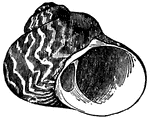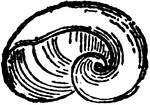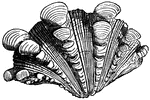
Tridacna Squamosa (Outside) (Lamarck)
"The center is a bright violet, with brownish longitudinal, punctured lines. All these are inhabitants…

Triton Anus (Lamarck)
"The genus Triton is classed next to the genus Murex. The shell is irregularly covered…

Triton Iotorium (Linnaeus)
"The genus Triton is classed next to the genus Murex. The shell is irregularly covered…
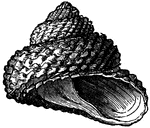
Trochus Cookii (Chemnitz)
"The species of the genus Trochus are found in all seas, and near to the shore in the clefts…
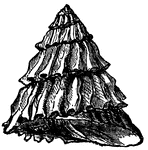
Trochus Imbricatus Gmel.)
"The species of the genus Trochus are found in all seas, and near to the shore in the clefts…
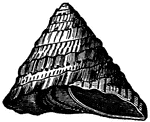
Trochus Inermis (Gmel.)
"The species of the genus Trochus are found in all seas, and near to the shore in the clefts…
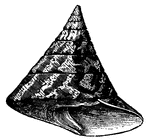
Trochus Niloticus (Linnaeus)
"The species of the genus Trochus are found in all seas, and near to the shore in the clefts…
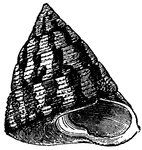
Trochus Virgatus (Gmel.)
"The species of the genus Trochus are found in all seas, and near to the shore in the clefts…
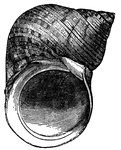
Turbo Imperialis (Gmel.)
This specimen comes from the Chinese seas. It is green on the outside, and brilliantly nacred within.
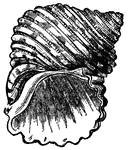
Turbo Margaritaceus (Linnaeus)
"A large thick and weighty shell, round-bellied and deeply furrowed; it is yellow, or rust-colored,…

Turbo Marmoratus (Linnaeus)
"The Marbled Turbo is the largest shell in the group. It is marbled green, white and brown outside,…
Turritella Angulata (Sowerby)
"Some other species, the names of which indicate a winding pyramid, have shells terminating in a sharp…
Turritella Goniostoma
"Some other species, the names of which indicate a winding pyramid, have shells terminating in a sharp…
Turritella Replicata (Linnaeus)
"Some other species, the names of which indicate a winding pyramid, have shells terminating in a sharp…
Turritella Sanguinea (Reeve)
"Some other species, the names of which indicate a winding pyramid, have shells terminating in a sharp…
Turritella Terebellata (Lamarck)
"Some other species, the names of which indicate a winding pyramid, have shells terminating in a sharp…
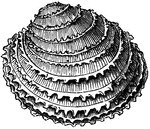
Venus Gnidia (Broderip)
"Among the cast number of species belonging to the Veneridae family, many are extremely rare, and much…

Venus Plicata (Gmel.)
"Among the cast number of species belonging to the Veneridae family, many are extremely rare, and much…

Voluta Cymbium (Linnaeus)
"The Volutes live in the sands near the shore; sometimes they are found high and dry, left by the retreating…

Voluta Delessertii (Petit)
"The Volutes live in the sands near the shore; sometimes they are found high and dry, left by the retreating…

Voluta Imperialis (Lamarck)
"The Volutes live in the sands near the shore; sometimes they are found high and dry, left by the retreating…

Voluta Musica (Linn.)
"The Volutes live in the sands near the shore; sometimes they are found high and dry, left by the retreating…

Voluta Scapha (Gmel.)
"The Volutes live in the sands near the shore; sometimes they are found high and dry, left by the retreating…

Voluta Undulata (Lamarck)
"The Volutes live in the sands near the shore; sometimes they are found high and dry, left by the retreating…

Voluta Vexillum (Chem.)
"The Volutes live in the sands near the shore; sometimes they are found high and dry, left by the retreating…
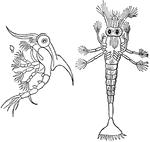
Zoea Taurus
"The lowest division of articulate animals is the Crustacea. Their name signifies a hard crust of covering,…
